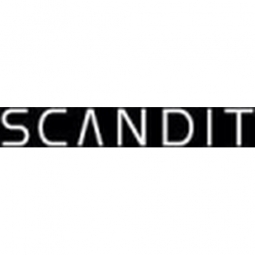Case Studies.
Add Case Study
Our Case Study database tracks 18,927 case studies in the global enterprise technology ecosystem.
Filters allow you to explore case studies quickly and efficiently.
Download Excel
Filters
-
(3)
- (3)
- (1)
- (1)
-
(1)
- (1)
-
(1)
- (1)
-
(1)
- (1)
- (1)
-
(1)
- (1)
- View all 5 Technologies
- (2)
- (2)
- (1)
- (1)
- (1)
- View all 8 Industries
- (3)
- (2)
- (2)
- (1)
- (3)
- (2)
- (1)
- (1)
- (1)
- View all 6 Use Cases
- (3)
- (1)
- (1)
- (5)
Selected Filters

|
Enhancing Delivery Efficiency with Advanced Smartphone Scanning: A Case Study of La Poste
La Poste, France’s largest mail delivery provider, was facing challenges with its delivery process. The company, which employs over 90,000 mail and parcel carriers, is responsible for delivering 23 billion items annually, making operational efficiency a top priority. The carriers relied on low-end smartphones with an Android application integrated with open-source barcode scanning software for proof of delivery, track and trace, and other workflows. However, the scanning speed and precision were not up to the mark, leading to delivery errors. Misdelivered mail or parcels not only cost the company time and money but also affected its reputation. La Poste wanted to compare the performance of smartphones using open source scanning against those using proprietary software across a wide variety of devices, under a range of challenging real-world conditions.
|
|

|
Supercharging App Ordering with 5x Faster Scanning: A Case Study on Elektro-Material
Elektro-Material AG, a leading supplier of electrical components to Switzerland’s construction industry, faced a significant challenge with their EM order app. The app, which was a significant source of business revenue, had an open source scanning solution that customers used to scan barcodes from a catalogue or print barcode labels for products that did not have barcodes. However, customers found the scanning process slow, often taking several seconds to scan a single barcode. This delay resulted in a poor user experience and led customers to prefer reordering over the phone or at an Elektro-Material branch, especially for large orders. Additionally, some products only had serial numbers, which could not be captured by the open source scanning component of the EM app. These performance issues negatively impacted the customer’s purchase experience and reduced the number of orders originating through the app. Elektro-Material wanted to improve the app’s performance and increase customer stickiness.
|
|

|
Smartphone Scanning Revolutionizes Retail Operations at Colruyt
Colruyt Group, Belgium's largest retail conglomerate, was on a mission to optimize its retail operations and enhance customer experiences. As part of its digital transformation program, the company aimed to streamline store processes, improve co-worker and customer communications, and drive innovation. The group decided to replace shared dedicated scanning devices with personal consumer devices that would be easy for store staff to operate and always stay connected. They sought a solution that offered superior software-based barcode scanning, shared their vision for a platform to support future innovation, and was easy to integrate with its suite of apps, supported diverse frameworks and mobile architectures.
|
|

|
Simplifying Order Entry with Smart Device Scanning: A Case Study on Cardinal Health
Cardinal Health, a leading healthcare services company, was facing challenges with their product ordering process for pharmacy customers. The company, which specializes in the wholesale distribution of pharmaceuticals and medical products, was using embedded laser or LED scan engine devices to facilitate the pharmacy product ordering process. However, these devices had scan accuracy rates of around 70 percent, leading to potential errors and increased costs. Cardinal Health attempted to address this issue by leasing purpose-built scanner hardware to their customers, but found this solution to be lacking in speed and overall scan performance. The company then decided to test a more cost-efficient option with consumer device apps.
|
|

|
Optimizing Delivery Workflows with MatrixScan-AR and OCR Integration
NACEX, a leading courier service operating in Spain, Portugal, and Andorra, was facing challenges in speeding up parcel deliveries from distribution centers to the last mile. The company, which handles special requirement deliveries such as pharmaceuticals, relied on franchisees with over 1,500 vehicles to sort and deliver parcels. The standard receiving process involved using a dedicated device to scan the barcode on every parcel for verification and sorting. The company wanted to improve scan speeds and the type of information they could record for faster delivery and improved customer service. With last mile drivers scanning over five million barcodes every month, superfast scanning was critical. Additionally, they needed to maintain proof of delivery records for each delivery, which included photographing the parcel and the recipient’s signature, or scanning it. Drivers delivering pharmaceutical items had to abide by stringent temperature requirements and delivery times, and needed to be alerted in advance of any updates.
|
|

